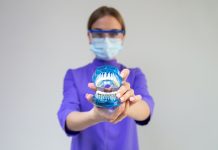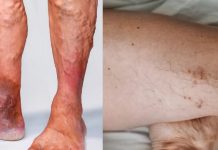Overview, Causes, & Risk Factors
Diaper rash is a rash in the area of the body covered by a diaper.
What is going on in the body?
Most infants develop a diaper rash at one time or another. Diaper rash is a very common condition in infants because their skin is very sensitive. A diaper rash is most often due to a reaction of the infant’s skin to moisture and irritants.
What are the causes and risks of the condition?
There are many causes of a diaper rash. Most diaper rashes are due to prolonged contact with wetness, bacteria from bowel movements, and chemicals in the urine. Diaper rash may also develop if an infant is on antibiotics and develops a yeast infection of the skin. Infants with a history of skin disorders, such as eczema, or cradle cap, may be more likely to develop a diaper rash.
Diaper rash does not usually present a health risk. However, if it is not properly treated, a bacterial infection may develop in the affected skin. A bacterial infection can lead to more serious problems such as:
Symptoms & Signs
What are the signs and symptoms of the condition?
The symptoms of diaper rash include:
If the rash is caused from a yeast infection, the rash often has bright red spots that form a solid area, which is surrounded by red dots. This rash typically covers a large area.
Diagnosis & Tests
How is the condition diagnosed?
To diagnose a diaper rash a healthcare provider will take a history and examine the rash. A rash caused by an irritant is tends be a spotty, pinkish-red rash that is itchy. If the rash is caused from a yeast infection, the rash often has bright red spots that form a solid area. In this case, the rash is often surrounded by red dots. This rash typically covers a large area.
Prevention & Expectations
What can be done to prevent the condition?
Diaper rash is difficult to prevent. However, the following steps may decrease skin irritation in the diaper area:
What are the long-term effects of the condition?
Diaper rashes usually have no long-term effects. It is possible that chronic rashes or those that become severely infected could lead to scarring.
What are the risks to others?
Diaper rash presents no health risks to others and is not contagious.
Treatment & Monitoring
What are the treatments for the condition?
Prevention is the first measure for diaper rashes. When a diaper rash develops, treatment may include:
The caregiver may also need to provide extra comforting to a fussy infant.
What are the side effects of the treatments?
There are usually no side effects to changing a diaper and cleaning the infant’s skin frequently. If powder is used, the caregiver should be careful to use a small amount and limit the powder to the diaper area. This is because an infant can easily inhale powder dust. There are possible side effects to ointments and cortisone creams including further rash. Strong hydrocortisone creams can cause thinning and scarring of the genital area. If an antibiotic is used, there may be side effects from the antibiotic. These include stomach upset and allergic reaction. A healthcare provider should be contacted if side effects develop.
What happens after treatment for the condition?
After a diaper rash is treated and goes away, there is no further treatment needed. If an infant has a diaper rash that persists despite treatment, the baby’s healthcare provider should be consulted.
How is the condition monitored?
The parents can often monitor the rash at home to make sure it is getting better. If a rash does not improve, the caregiver should consult a healthcare provider for further evaluation and monitoring.
Article type: xmedgeneral














































